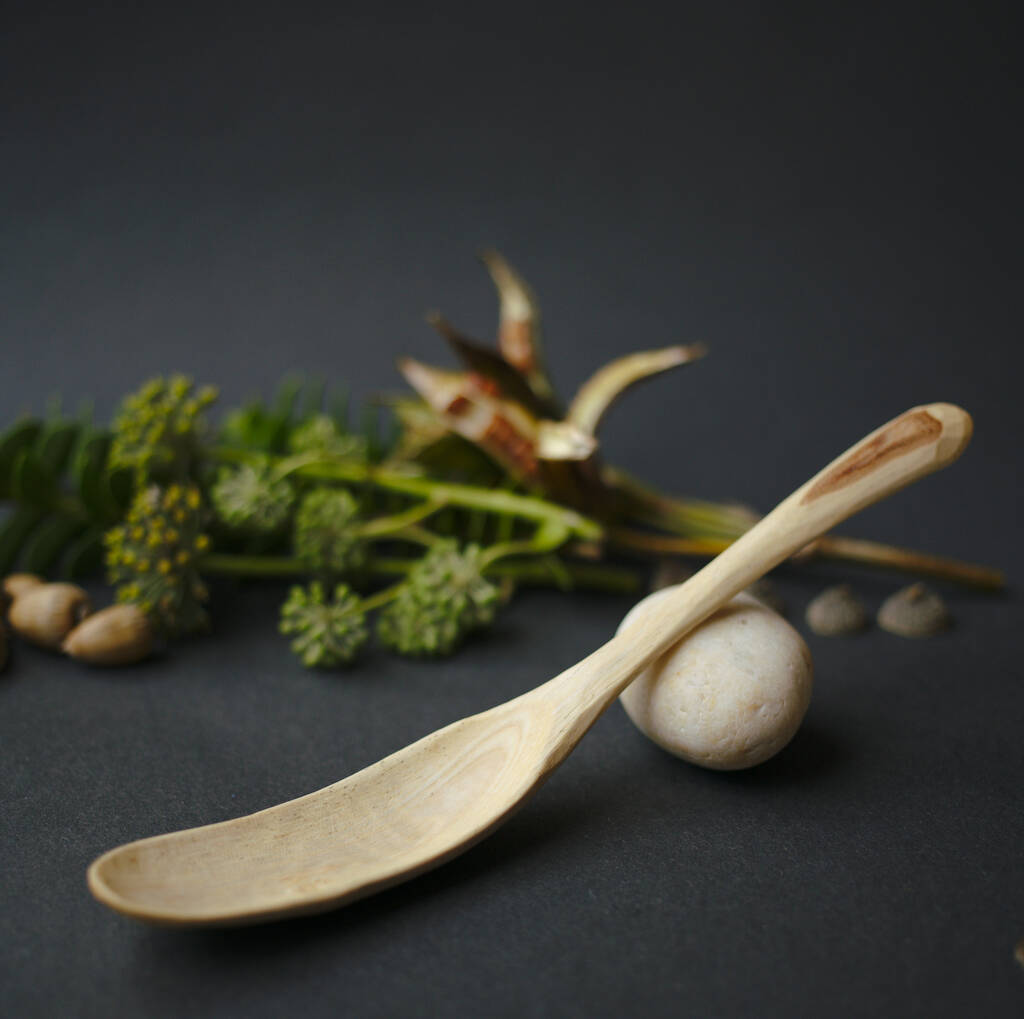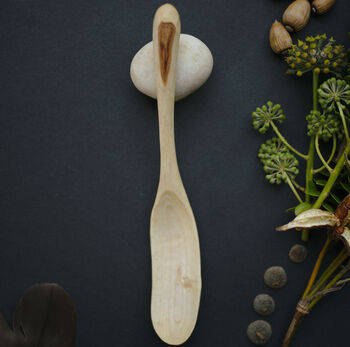We strive to create closed-loop economies in our lives and in our business, so instead of throwing away the wood that is tough to work with, we take chances that other makers won't, and allow the unique bends and burls to become parts of our work that you will fall in love with.
You end up with a piece of work that no one else will ever have—no two pieces we make will ever be the same—and we get the joy and satisfaction of making something that will last a lifetime from wood that otherwise would have been left to turn back into soil.
Using only a hatchet, a few knives, and a vice, each piece of wood is split and carved while allowing the curves and knots of the wood to tell us what the wood would like to become. We don't keep sketches or draw our work on the wood before we start. Instead, we look at the grain and begin to work a rough shape out of the wood with an antique, Victorian hatchet.
We then, in the case of our spoons, shape a bowl using a hook knife and finish the back of the bowl and handle with a straight knife, leaving the faceting effect that comes from each stroke of the knife.
Our pieces are finished by soaking them in hot water, then wet sanding them down to a soft, matte finish. They are left to dry overnight, then coated with a food-safe linseed oil and beeswax mixture and left to soak overnight again, letting the oils penetrate and embed into the grain of the wood. We polish them the next morning, but never to a shine, because we believe that a piece of art should reflect the materials it is made from, and trees are not naturally shiny, straight, or perfect.













